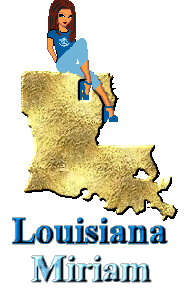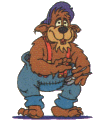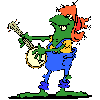Louisiana



Entered the Union: April 30, 1812 As the: 18th state
American Folk Dance: -Square Dance
Amphibian: Green Tree Frog
Bird: Brown Pelican
Bordering States: Arkansas; Mississippi; Texas
Capital: Baton Rouge
Colors: Blue,White and Gold
Crustacean: Crawfish
Day : April 30
Dog: Louisiana Catahoula Leopard Dog
Doughnut : Beignet
Drink: Milk
Flag: 
Flower: Magnolia
Fossil: Petrified Palmwood
Freshwater Fish: White Perch and White Crappie
Fruit: Strawberry
Gemstone: Agate
Great Seal:
Historical Sites: French Quarter (New Orleans),
Plantation Homes, Cajun Country (Mississippi Delta Region),
Chalmette National Historical Park
Insect: Honeybee
Judicial Poem: America, We The People
Major Industries: Manufacturing, minerals,
petroleum products, Fishing, Tourism
Mammal: Black Bear
Musical Instrument : Diatonic Accordian (Cajun accordian)
Nicknames: Pelican State, Sportsman's Paradise,
Creole State, and Sugar State
Oldest Permanent Settlement: Natchitoches
Origin of Name: Named in honor of Louis XIV of
France and his wife Anna
Paintng: Louisiana
by Johnny O. Bell and Johnny F. Bell
Containing
representations of every current official symbol
as well as many commonly accepted state icons and
dominated by the state colors of gold, white and blue
Pledge of Allegience:
"I pledge allegiance to the flag of the state of Louisiana
and to the motto for which it stands: A state, under God,
united in purpose and ideals, confident that justice shall
prevail for all of those abiding here."
Points of Interest: Jean Lafitte National
Historical Park & Preserve, Kisatchie National Forest,
Confederate Museum(New Orleans), Superdome (New Orleans)
Reptile: Alligator
Saltwater Fish: Spotted/ Speckled Trout
Song(s):
Official-Give Me Louisiana
Unofficial-You Are My Sunshine
Environmental-Gifts of the Earth
March-Louisiana My Home Sweet Home
Sports Teams: New Orleans Saints (Football)
Tartan:
The Louisiana
Tartan
The colors of the Louisiana Tartan represent:
Blue for the sky, lakes, bayous, rivers and waterways
Green for agriculture and forests
White for rice, sugar cane, cotton and the magnolias
Black for petroleum and natural resources
Tree: Bald Cypress,
Wildflower: Louisiana
Iris
Did You Know . . .
Mardi Gras is a celebration that is known world
wide. It is an ancient custom that originated in France. It
celebrates food and fun to be had just before the 40 days of fasting in Lent :
a time of prayer repentance and sacrifice. This custom was brought to Louisiana
by the French
Louisiana has the greatest concentration of crude oil
refineries, natural gas processing plants and petrochemical
production facilities in the Western Hemisphere.
Louisiana's marshes supply most of the nation's muskrat fur as
well as that of opossum, raccoon, mink, and otter, and large numbers
of game birds.
Planters initially produced indigo and tobacco, but these crops
were replaced by cotton in north Louisiana and sugar cane in the
more tropical southern Louisiana. Today, Louisiana is among the top
ten states in the production of sugar cane, sweet potatoes
, rice , cotton and pecans
Louisiana is the nation's largest handler of grain for export to
world markets. More than 40 percent of the U.S. grain exports move
through Louisiana ports.
Because of its many bays and sounds, Louisiana has the longest
coastline (15,000 miles) of any state and 41 percent of the nation's
wetlands.
lagniappe
Used in Southern Louisiana & Mississippi
- to give more
-to denote a little bonus that a
friendly shopkeeper might add to a purchase.
By extension, it may mean an extra or unexpected gift or benefit.
-In Louisiana, a trifling present given to customers by tradesmen; a gratuity.
Lagniappe . . .is something thrown in, gratis, for good measure. --Mark Twain.

 Louisiana
Index Louisiana
Index





|